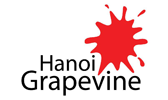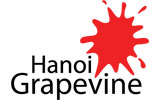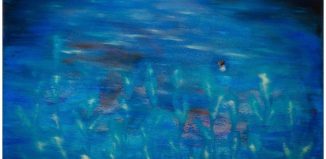Hanoi Ink – Reviews Strange Roots Part 3
Strange Roots does strike out a little bit here, with rather too many of references to the Hanoi traffic (a topic Connla advises was, along with religion and politics, proscribed for Once A Book A Time contributors). There is less whimsy, although it is not completely absent, thanks in particular to Kelly Morse’s lovely piece about the Bunny Man selling pet rabbits outside a local high school. There is rather more serious information here, particularly in the historical pieces. And Strange Roots does take back some ground through the range of media on offer, including artwork, poems and history alongside daily events and fiction.
Eating and drinking: it seems to be an increasingly established fact that Vietnam is a food-lover’s paradise, and food probably accounts for a fair slice of the words published in English about the place in recent years. Food-and-drink-stuffs referenced in Once A Book A Time include bia hoi, snake meat and snake blood wine, bear fetus wine, instant noodles, fertilized duck eggs, live shrimp and squid (the subject of long-departed Canadian photographer Mike’s “Vietnamese Sashimi”), dog meat, and dui (bamboo rat, another contribution from Mike).
In contrast, there is really nothing edgy in Strange Roots’ food and drink offerings, which include local comfort food on the street like bun cha, banh bao and banh nuong washed down with mia da (iced sugar cane juice) or ca phe sua da (Vietnamese iced coffee), as well as KFC and the contrast between Hilton Hotel’s $26 per person De Luxe Lunch Buffet and the banana fritters sold on the street outside. I don’t think anyone in either collection mentioned pho.
Gender balance: Ever since the stir caused by the VIDA statistics in early 2011, which demonstrated the persistence of a gender bias in leading transatlantic liberal publications, it has become something of an expectation to consider balance and representation by gender in literary collections. By my count, Strange Roots probably avoids much criticism of this kind, with all but one of the pieces written by women, although Andy Engleson’s piece takes up significantly more than half of the book. Editing and illustrations have an even gender balance. Once Upon A Book does not score so well, with two male editors and only three women out of nine authors (including one anonymous writer of a love letter on a paper napkin that was in fact found and contributed by a dude).













